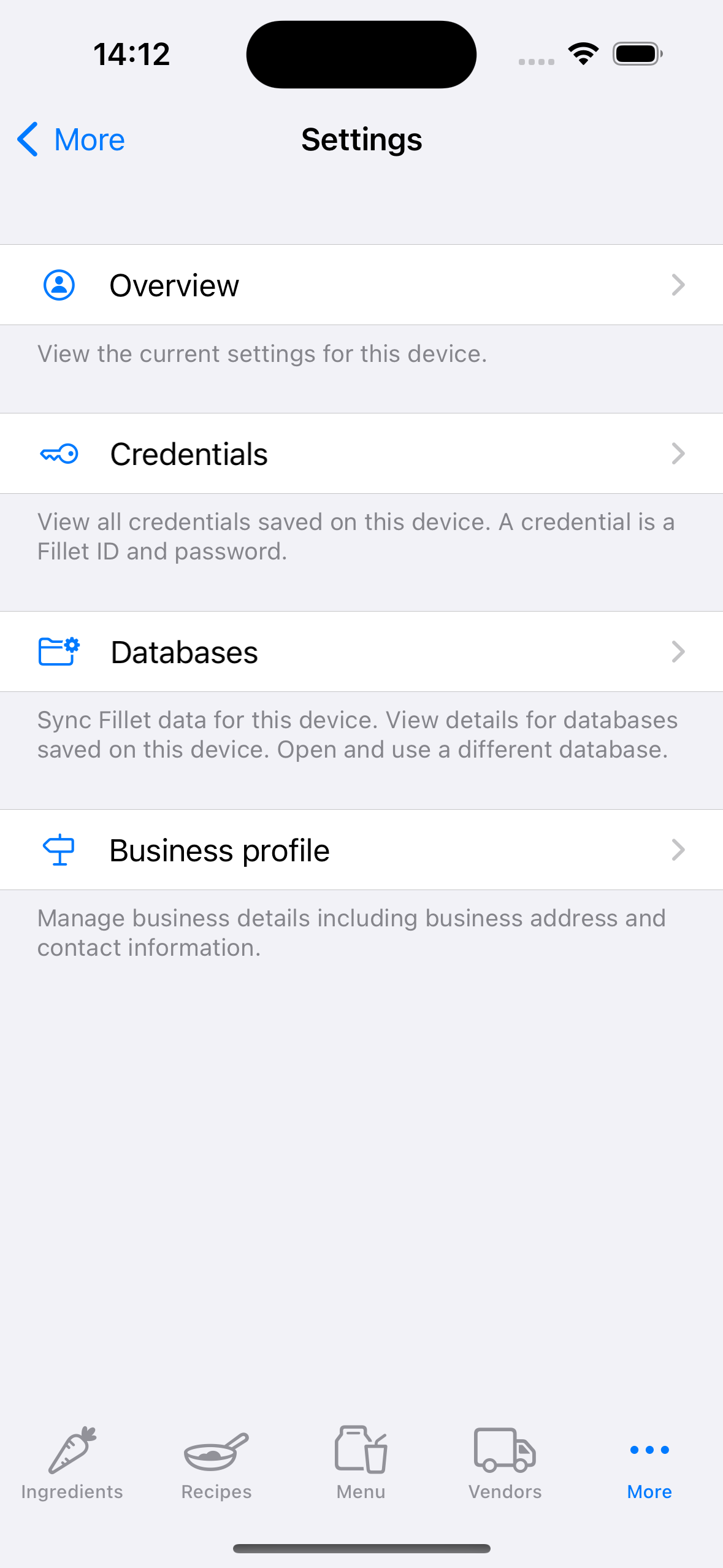About Fillet databases
Learn about Fillet databases and how they are managed in the Fillet iOS and iPadOS applications.
Introduction
The application data for a Fillet account is stored in a unique database that belongs to that account.
The latest version of the Fillet iOS and iPadOS applications provides improved management of your Fillet databases.
You can view and manage databases in the Databases tab.

Remote versus local databases
A local database is a database that is available on a specific device.
Similarly, local data is data that is stored locally on a specific device.
A remote database is a database that is available on the server.
Remote data is data that is stored remotely on the server.
Local data is available offline because it is stored in a local database on the device.
This means that you do not need an internet connection to work with a local database.
If you have local data that has not been synced (“unsynced data”), that means that this data has not been uploaded to the server. As a result, it is not backed up and cannot be accessed on other devices.
Remote data is data that is stored in a remote database on the server.
Remote data is backed up and is available for download to any device.
You can download remote data anytime by syncing that database. You can also work with remote databases using the Fillet web app.
Tip:
The Fillet iOS app shows you a sync recommendation if you have data that has not been backed up to the server. This is a recommendation that you sync that database promptly
Learn more about syncing data in the Fillet iOS and iPadOS applicationsWhen you sync a local database, any unsynced local data will be uploaded to the server and becomes part of the remote database. As well, any unsynced remote data will be downloaded to the device. After sync completes, that local database will contain the remote data that was downloaded from the server.
Individual versus organization databases
There are two types of Fillet accounts: Individual and Teams. Accordingly, there are two types of databases: individual and organization (Fillet Teams).
Individual databases can only be accessed by the individual account owner, using their personal credentials, that is, their unique Fillet ID and password.
Organization databases can be accessed by any member of the Fillet Team. Each team member uses their unique Fillet ID and password to “sign in” (authenticate), and then access the organization database.
If a team member has been removed from the organization, then they can no longer access that organization database.
One or more databases
A device can store one or more local databases. These can be individual databases or organization databases (Fillet Teams).
However only one database can be open at any given time, which is the “Currently open” database. This means that selected database is currently open and being used on the specific device. All data and changes are being saved to this database.
You can select and open a different database anytime. You can choose a databases from the list of “Available on this device” databases. Or you can sync to download a remote database from the server.